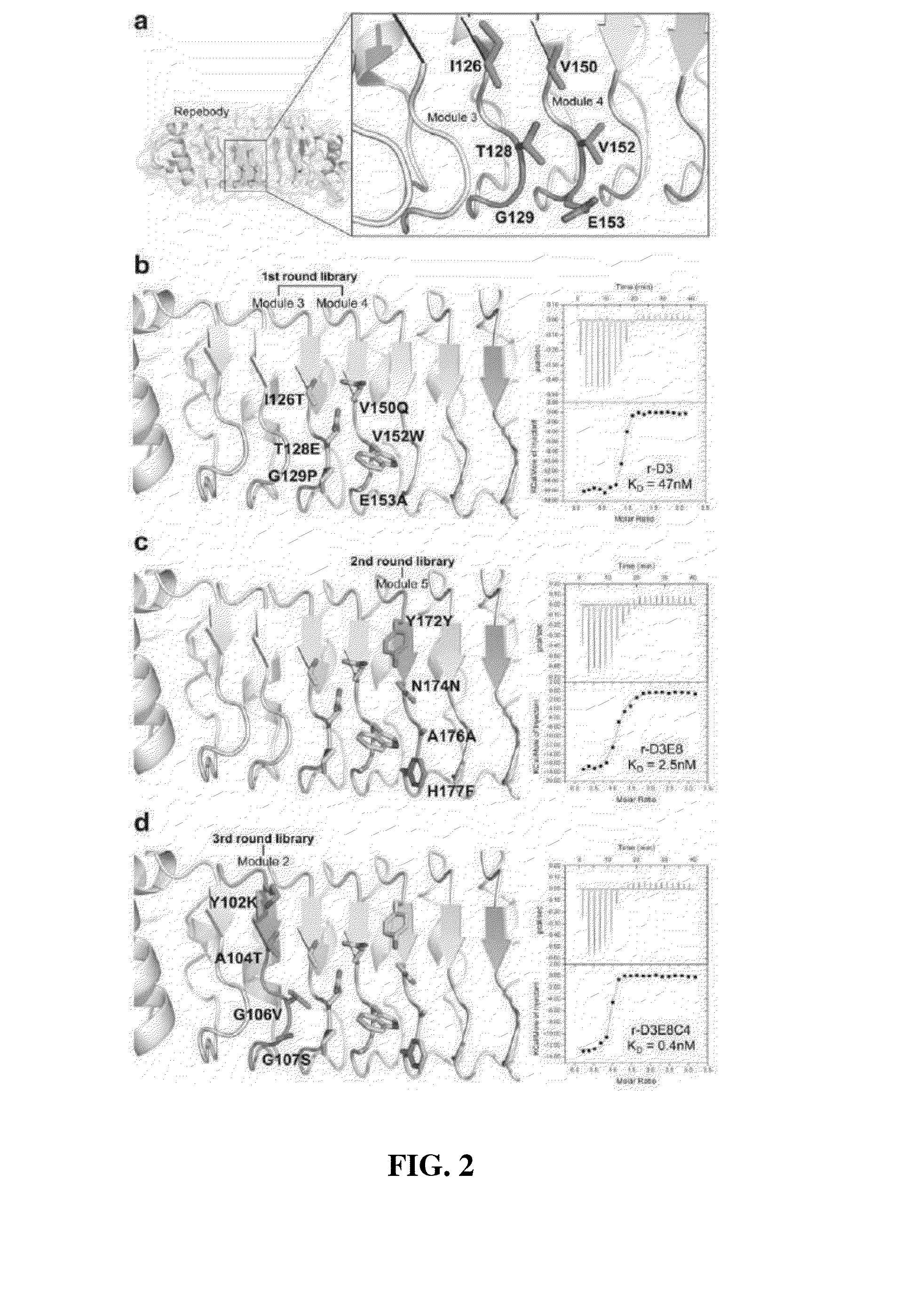Method for improving repebody containing repeat modules
- Summary
- Abstract
- Description
- Claims
- Application Information
AI Technical Summary
Benefits of technology
Problems solved by technology
Method used
Image
Examples
example 1
Design of Phagemid for Selection of Random Repebody Library
[0071]A protein backbone named repebody was used as a component of the present invention. The backbone is a water soluble polypeptide in which an LRR portion containing an N-terminal of an internalin B protein and a C-terminal of VLR protein is fused, and has an amino acid sequence the same as SEQ ID NO: 1.
example 1-1
Expression of Repebody Using Signal Sequence in Periplasm
[0072]In order to confirm whether or not the repebody is applicable to a phage display, it is required to confirm periplasmic expression of E. coli to be used as a host, and whether or not protein is well expressed onto a surface particle of a phage. To this end, two recombinant vectors were produced by inserting MalE and DsbA signal sequences which are signal polypeptides differentiated from each other right into the back side of an initiation codon, using pMAL-c2x (NEB, USA) vector. Then, DNA in which the repebody and a histidine-tag are fused was inserted between the signal sequence and termination codon to complete a final vector. Two completed vector was introduced into E. coli XL1-blue strain to produce a transformant, the transformant was cultured until absorbance (OD600) reached 0.5 and then 0.1 mM IPTG (Isopropyl β-D-1-thiogalactopyranoside) was treated to induce expression of the protein, followed by culturing at 30°...
example 1-2
Construction of Phagemid for Repebody Expression on Surface of Phage
[0074]A phagemid was designed based on the MalE signal sequence finally determined in Example 1-1 above. With pTV118N (Takara, Japan) as a basic frame, the MalE signal sequence was inserted right into the back side of the initiation codon and DNA in which the repebody and a histidine-tag are fused was added to thereby construct a phagemid. In addition, gp3 which is capable of labeling a relatively large protein among several phage surface proteins was used, C-terminal was positioned at the back of an amber codon, and two continuous terminal codons were finally inserted thereto, thereby completing the phagemid named pBEL118M (SEQ ID NO: 2). The phagemid was introduced into XL1-Blue to produce a transformant, and the produced transformant was cultured by the same method as Example 1-1 above except for treatment with 0.5 mM IPTG, followed by centrifugation to obtain a culture fluid.
[0075]The culture fluid was applied t...
PUM
| Property | Measurement | Unit |
|---|---|---|
| Affinity | aaaaa | aaaaa |
Abstract
Description
Claims
Application Information
 Login to View More
Login to View More - R&D
- Intellectual Property
- Life Sciences
- Materials
- Tech Scout
- Unparalleled Data Quality
- Higher Quality Content
- 60% Fewer Hallucinations
Browse by: Latest US Patents, China's latest patents, Technical Efficacy Thesaurus, Application Domain, Technology Topic, Popular Technical Reports.
© 2025 PatSnap. All rights reserved.Legal|Privacy policy|Modern Slavery Act Transparency Statement|Sitemap|About US| Contact US: help@patsnap.com



